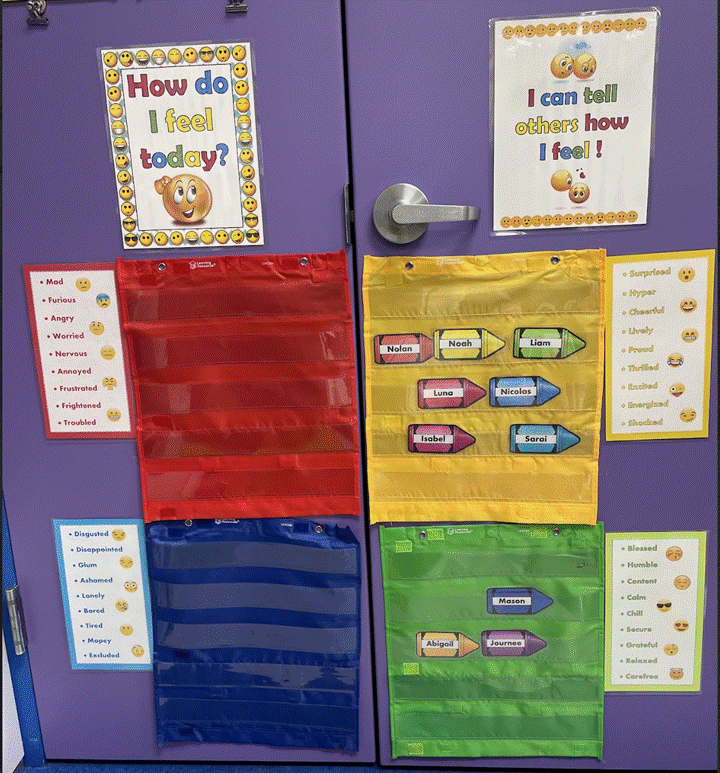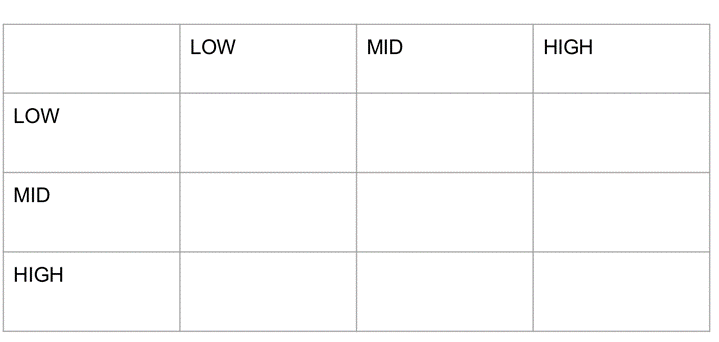Self-regulation in Preschool Kids
Danielle Anderson
336@473 ~ Pre-K
INTRODUCTION:
What is Self-regulation? Self-regulation is the ability to understand and manage your own behavior and your reactions to feelings and things happening around you. Self-regulation helps children learn, behave well, get along with others and become independent. Self-regulation begins to develop rapidly in the toddler and preschool years.
TASK:







PROCESS:
Whole Group Instruction

https://docs.google.com/presentation/d/1ZVbvD3EnhJKCwGchjgEH2HGavKA2tQxMsJ1lrGFbgGI/e dit#slide=id.p
The 6 Steps of the Public Policy Analyst (PPA)
1.† †††Define the Problem
What is dysregulated in Preschoolers?
Emotional dysregulation is when a child can't control their emotions, their response seems over-reactive, and they are struggling to find balance in how they are feeling. Emotional dysregulation is very common in the toddler-preschooler range because they literally aren't capable of controlling their emotions. They might have difficulties with transitions, repeatedly using too much force, frequent meltdowns, recurring social challenges, or persistently having trouble with daily routines.
2.††† Gather the Evidence
5 warning signs your child struggles with self-regulation
Your child has difficulties with transitions
This could look like having trouble getting out of an exciting environment (like a birthday party or playing on the playground), getting out the door in the morning for school or an afterschool activity on time, or getting stuck in front of the television (or tablet, phone, etc.).
Your child repeatedly uses too much force
Some examples include when roughhousing with friends or siblings turns into biting, when pushing turns into shoving into the door, or when touch turns to tackle. In these situations your childís level of alertness continues to accelerate (or level up) without registering itís time to shift down.
Your child has frequent meltdowns
This could look like overreacting to small challenges or changes in the schedule, seeming to be out of control, or thrashing and throwing their body around. In these situations your childís system is overloaded with sensory information, their cup runs over so to speak, and they canít handle any more stimulation. Their reactions could be much greater than anticipated. You may think to yourself Ďthat was the straw that broke the camelís backí.
Your child has recurring social challenges
This could look like having a hard time playing with peers or sharing toys. Interacting with friends is hard, perhaps they misinterpret their friends' behavior frequently or they miss social cues entirely. You may spend a lot of time playing referee between your child and other children their age.
Your child persistently has trouble with daily routines
This could look like wanting to horseplay or get wound up right before bedtime, having trouble falling asleep on a consistent basis, or struggling to wake up & get going in the morning, frequently seeming to have woken up on the wrong side of the bed. Other examples could be they get wound up after a bath or shower or have a hard time finishing meals because they struggle to stay seated at the table
3.††† Identify the Causes
How are these challenges related to self regulation?
Well letís back up to what we learned about self regulation. Efficient self regulation enables us to transition from one alert state to another seamlessly when the situation calls for it. When we have trouble transitioning from one state to the other, that is where the trouble lies. So why would one have trouble with self regulation? The number one reason your child could be having trouble self-regulation is that they are processing sensory information inaccurately.
For example, say your child frequently gets upset when they accidentally get bumped by a friend while playing. This could mean that they misinterpret the touch sensation as painful or dangerous, which naturally elicits the fight, flight, or freeze response.
Another example, say your child frequently uses too much force when they play with their siblings. In this situation their muscles may not be getting enough sensory information to determine how much pressure they are using. They simply are not aware of their own force.
One last example, say your child has a hard time interacting with peers. They seemingly ignore social cues from their friends. This could mean that they are distracted with other sensory input in the environment Ė the stiff tag on their shirt, the sound of people talking in the background, the smell of someoneís lunch.. There could be multiple distractions that your child is trying to process at the same time, thus missing their friendís invitation to play or their friend asking them not to do something again.
4.††† Evaluate an Existing Policy
The Mood Meter is a tool that helps young children build self and social awareness. It helps us understand how our emotions influence our thinking and behavior, and it empowers us to recognize and label our full range of emotions, and manage them more skillfully.

5.††† Develop Solutions

Using the Mood Meter for Families
Check In! Using the Mood Meter for Families
Resources for Families
Mood Meter Check-In


Cozy Corner
Feelings & Emotions Read Alouds
The Emotions Book by Liz Fletcher
https://www.youtube.com/watch?v=jl8G2jiSNA0
The Choices I Make by Michael Gordon
https://www.youtube.com/watch?v=7e27bjSDI5M
Iím Just a Kid by Chandelle Morris
https://www.youtube.com/watch?v=LL2H5pK6qO8
The Feelings Book by Todd Parr
https://www.youtube.com/watch?v=sBFbQ70AJjs&t=71s
The Boy with Big Feelings by Britany Lee & Jacob Souva
https://www.youtube.com/watch?v=X9n05E6WASo
The Color Monster by Joshua Brooks
https://www.youtube.com/watch?v=W6wIEp-M4tg
In My Heart by Jo Witek
https://www.youtube.com/watch?v=xIfLgHBwYx4
Grumpy Monkey by Susanne Lang
https://www.youtube.com/watch?v=wylzbbSL668
6.††† Select the Best Solution† (Feasibility vs. Effectiveness)

EVALUATION:

AND/OR

CONCLUSION:
The mood meter helps students recognize how they are feeling and learn strategies for regulating their emotions. Using a mood meter also helps teachers understand how their students are feeling so they can make a plan to follow up one-to-one as needed. Teachers and families can work on strategies for parents to utilize at home as well. It is very important that children learn how to self-regulate and learn how to manage their emotions at a young age. As a child grows, poor self-regulation skills may lack self-confidence and self-esteem and have trouble handling stress and frustration. Often this might result in anger or anxiety. As an adult, it can even lead to being diagnosed with a mental condition in the future. In sharp contrast, addictions and addictive disorders, including eating issues, substance abuse, and gambling can be construed as examples of self-regulation failure.
STANDARDS: †††
PK.AL.2 Actively engages in problem solving
PK.AL.2 Indicators:
a. Identifies a problem and tries to solve it independently
b. Attempts multiple ways to solve a problem
c. Communicates more than one solution to a problem
d. Engages with peers and adults to solve problems
PK.SEL.1. Regulates responses to needs, feelings and events
PK.SEL.1 Indicators:
a. Expresses feelings, needs, opinions and desires in a way that is appropriate to†††
††† the situation
b. Appropriately names types of emotions (e.g., happy, excited, sad) and associates
††† them with different words and behaviors
c. Demonstrates an ability to independently modify behavior in different
††† situations

